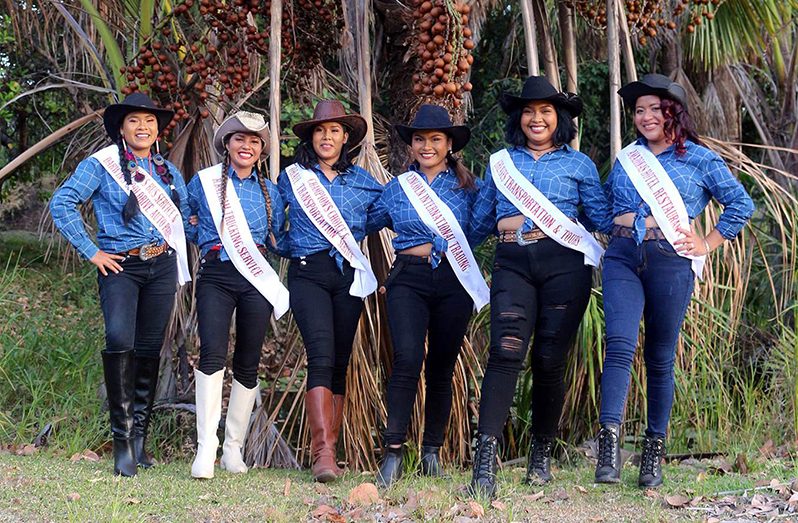Keeping part of Guyanese culture alive
RIDERS and cow boys from Saddle Mountain and other remote locations in the Rupununi will begin leaving their homes around Wednesday with their animals, sleeping and resting at various spots along the way as they journey to Central Lethem for Rodeo 2023 on April 8 and 9.
Rodeo has always been a big deal for folks in the Region Nine communities ever since it got started in the early 1960s when ranchers would get together to do a big roundup once a year, assisting each other in identifying, branding and separating their personal herds from other ranch herds.
It was from this system of ‘self-help,’ starting south of the Kanukus towards the central and northern ranches and ending in a final big roundup at Pirara, that a friendly competition was born. Not too long after, as the ‘60s progressed, the rodeo became an organised event and moved to Stock Farm in St. Ignatius.
The event continued to gain popularity with neighbouring Brazilian ranchers and cowboys joining in for a chance at the title of ‘Rodeo King’, even as the beauties of the Rupununi participated in pageants for the ‘Rodeo Queen’ title.
The rodeo remained at Stock Farm until the Rupununi Development Company (RDC) gave the Rupununi Livestock Producers Association (RLPA) land in Tabatinga.
Here, organisers began to set up basic infrastructure for the rodeo. Even as the event was held without any sponsorship, the need for a more organised and structured rodeo became apparent as the number of persons attending grew.
Today, the much-anticipated and well-loved event, having garnered national attention and support, is being organised by the Rodeo Committee, which is a sub-committee of the RLPA.
Vice President of RLPA Michelle Kenyon spoke to Pepperpot Magazine recently about the event. This year, her plate is full as she will be heavily involved in the organisation of things. Responsible for getting the bar together, along with other important duties, Kenyon and her family are like the scores of other Rupununi families eagerly looking forward to the event.
In a heartfelt comment, she said: “It [the rodeo] maintains this connection that we have to each other, showcasing a part of the Rupununi culture that we hope will always be alive; I think that by having rodeo every year, we are contributing to keeping this part of our way of life alive.”
Residents of the Rupununi really get to enjoy the arts and the skills showcased. It causes a “big excitement” in the Rupununi and people are often sad when it’s over, having been able to meet and enjoy the company of friends they haven’t seen in a long time.
As for the ranches, bikers, and cowboys, they have an altogether different experience of the rodeo. “Riders from Saddle Mountain would be leaving on Wednesday. They are bringing out the horses and bulls, sleeping at different spots along the way and then arriving on Thursday so that the animals would rest. So their rodeo starts months before when they start to prepare the animals,” Kenyon shared.
Even as the rodeo is generally about riding animals (bull riding, bareback bronc and saddle bronc), there are also other activities like calf roping, wild cow milking, the barrel race, horse racing, watermelon eating competition, dirt bike racing, tug of war, dance off on country music, a rodeo pageant, and prizes for best-dressed adults and children.
For years, the rodeo committee worked on a voluntary basis, but this year, the members and others helping will be given a well-deserved stipend owing to the amount of work that is involved in organising the event.
Thanks to such efforts, the rodeo is more popular than ever today, with riders from the Rupununi, Brazil, England, America and other destinations. However, there remains a need for land and funding security to ensure a bright future for the rodeo, which is a growing attraction to the tourism industry.




.jpg)














